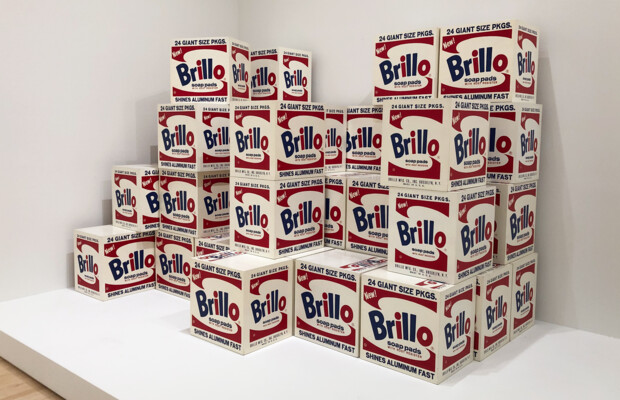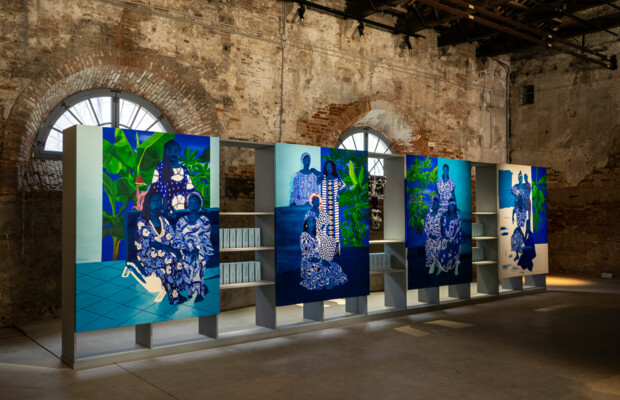Thriving to be Green: From Art Fairs to the Art World
At the 2023 Art Basel Miami Beach, the work of Seung-taek Lee titled Earth Play was shown in the Meridians sector. Just as visitors to the fair could hardly ignore this gigantic, half-deflated balloon painted as Earth amidst the busy venue, the art world could no longer turn its look away from the ongoing ecological crisis by hiding itself behind the once almighty curtain called culture.
The climate crisis and sustainable solutions are indeed getting more and more attention from the art world. VOLTA forecasted Collaborative Climate Solutions to be one of the 5 important trends in the art world in 2024. In the Art Basel & UBS Art Market 2023 report, “sustainability and the carbon footprint of the art market” ranked for the first time among the top 10 concerns in the report. Yet, while attention is mounting, substantial changes are hard to achieve, as the environmental impact of the art market is deeply intertwined with some of its essential elements and practices.
Turning the Art Fairs Green
Art fairs have always been an essential part of the art market. Yet their environmental impacts have been, just until recently, often ignored. The direct environmental impact of an art fair is twofold. First of all, an art fair could be a source of enormous waste, including building materials for the booth setup, print items such as brochures and site maps, food waste from the catering service, and so on. In addition to wastes, art fairs also emit a large amount of carbon emissions.
According to the UK-based NGO Julie’s Bicycle, the world's 100 major art fair venues are directly responsible for 20,000 tons of emission.
As the world is slowly waking up to the climate crisis, initiatives and efforts to reduce the environmental impact are also emerging in the sector of visual art. Gallery Climate Coalition (GCC), established in 2020, is one of the leading actors in turning the art world green, with major art fairs, such as Art Basel, Frieze, and VOLTA all being its members. In its Decarbonization Action Plan for galleries and art sector businesses, the GCC pointed out two main strategies for its members to reduce their environmental impacts: waste management and decarbonization.
Waste management is not new for art fairs and many solutions are already well-developed. Art Basel, as a leading actor in this field, has successfully built a fully reusable wall-system, saving the temporary walls in the venues from being wasted after a single fair. In addition, it has also ended the use of disposable tableware and has opted for the replacement of print materials by digital tools to the largest extent. By partnering with companies specializing in waste management, the sorting and recycling of waste is ensured. Similar actions are being adopted by many other major international art fairs. Untitled Art reuses tents to build up its venue annually in Miami beach, and has a “zero-impact” policy, committing to the goal that when the fair is over, no trash, oils or waste would be left behind. Art Paris reduced 12 tons of waste in 2022 compared to its previous level in 2021 by transforming brushed cotton used in the hanging system into insulation materials and reproposing carpets used at the fair to organizations or people in need.
Decarbonization, on the other hand, is less familiar for many actors in the sector. The GCC suggests its members undertake a carbon audit in order to identify domaines causing the largest emissions amongst their business activities. Energy use is one of the largest contributing factors to carbon emission. Frieze London, for example, emitted 205.5 tons of CO2 in 2018 due to its use of diesel to power the generators for the fair. After identifying this problem, it switched to biofuel as energy source in 2019 and had successfully reduced their emission by 67%. Apart from energy sources, the adoption of LED lighting contributes equally to a reduction of the energy use, another strategy that is largely adopted by art fairs in their venues.
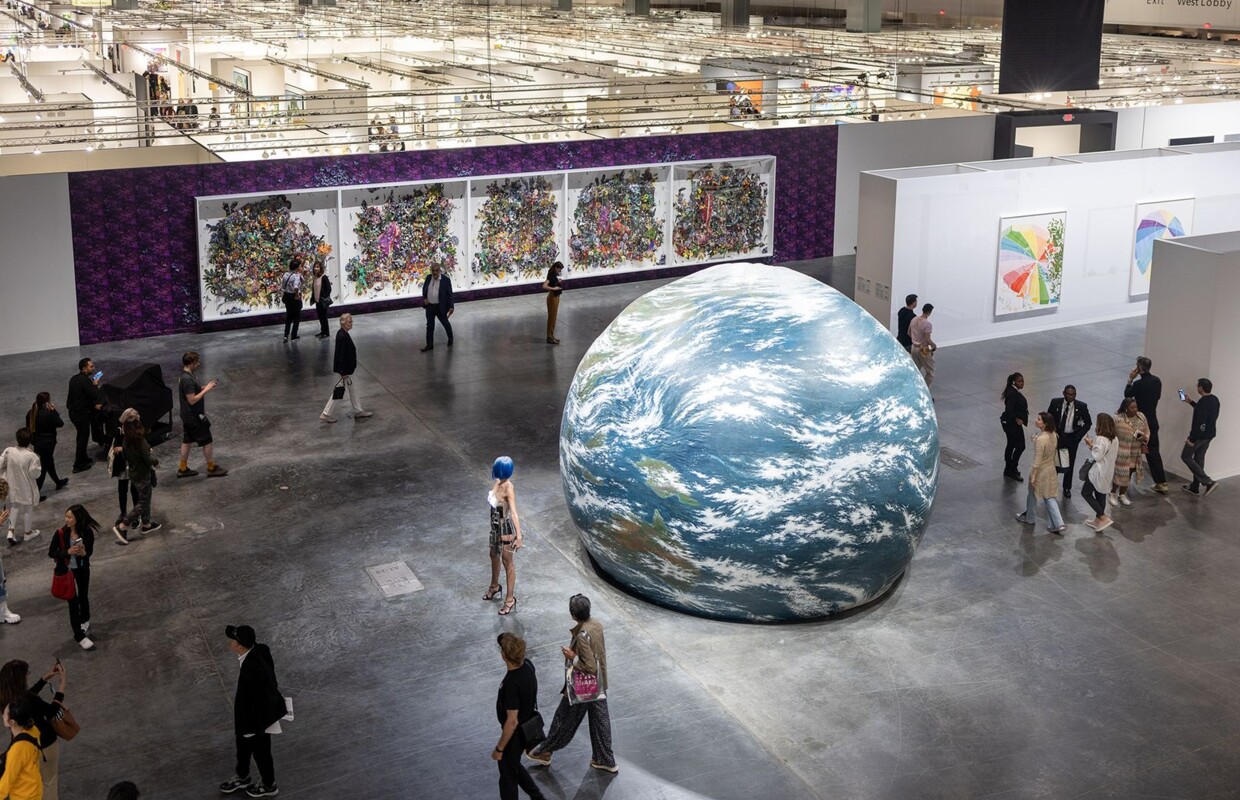
Seeing the Larger Picture
While the sustainable solutions are proving to be fruitful, they are not game changers in creating a more sustainable art fair. In fact, the carbon emission caused by art fairs are rather small compared to that caused by the visitors. According to Julie’s Bicycle’s report,
visitor travel accounts for 74% of the total emission of the visual art sector.
In other words, reducing carbon emissions of the art fairs by 50% is not going to contribute much to the larger picture if the visitors continue to fly thousands of miles from all over the world to attend these fairs.
Reducing visitor travel is not unimaginable. Learning from the experience of Covid-19 pandemic, many art fairs started to shift part of their activities online. Art fairs such as Frieze, Art Basel and Untitled Art all opened their online viewing rooms. While online viewing cannot entirely replace art fairs in their traditional form, it has at least provided a new alternative for collectors and visitors. Yet, the art fairs cannot solely count on online services, for the experience of being in the busy venue, seeing the artworks in person, and networking with fellow art professionals is an inherent part of the reason why many people visit art fairs. In fact, art fairs, as well-established institutions, are deeply rooted in, and contribute to, the sustaining of the art market as a whole. A removal of such institutions would therefore not be possible without hindering the market.
The Chart Art Fair explored another alternative. During the Covid-19 pandemic, its 2020 fair was held in a de-centered manner, spread across “28 of the leading art galleries across the Nordic capitals”. Such format adapted to the mobility constraints implemented during the pandemic, and was without doubt an interesting exploration of the possibilities of regional art fairs. Yet, without the context of a pandemic, a de-centered art fair spanning across a region could potentially amplify air travel. International visitors, eager to experience all the offerings of the fair, might be more inclined to travel extensively.
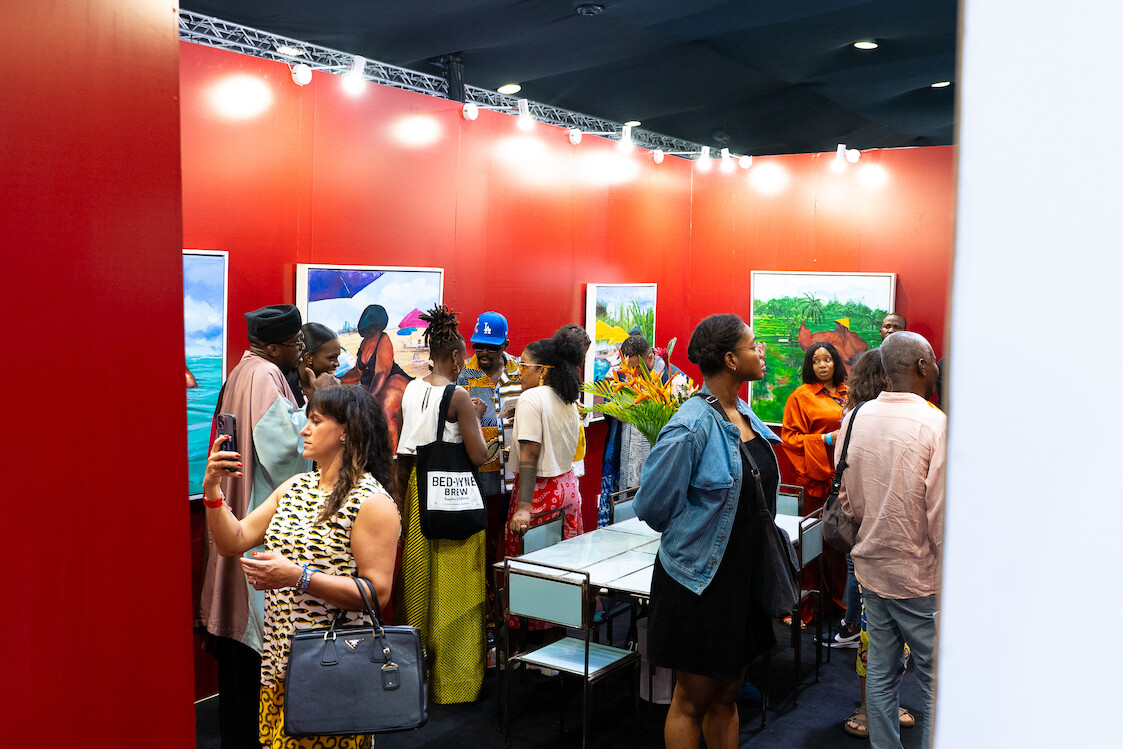
De-centered or not, regional art fairs are indeed being given greater importance in the art world. If regional art fairs are promoted as an alternative to reduce visitor travel, its success in these aspects then depends on whether its attractiveness, both for local galleries and for attendees, could outweigh that of the long-established international art fairs. This requires a high level of vitality and quality of the regional art scene and would in turn further promote its development. Yet, here lies the dilemma. Regional art fairs are not simply decarbonization tools. They are a part of the mechanism of the art market that generates financial profits for galleries and artists, as well as a platform to promote regional art. To achieve such goal, international visitors are equally, if not more important then local attendees. For example, the success of the recently emerged regional art fairs in Africa, such as the ART X Lagos in Nigeria and the 1-54 Contemporary African Art Fair in Morocco, lies partly in their promotion of African artists both within and beyond the continent.
Thus, while a regional art fair without visitors flying from all over the world to the venue may have a much smaller carbon footprint, it runs the risks of limiting the promotion possibilities for its artists and galleries within the global art market, which might be one of the most important tasks of art fairs.
New Agents for Change
The conflict between the environmental impact of visitor travel and its necessity extends beyond the scale of art fairs and extends to the entire art market and the cultural sector. Entering into the age of limitation, the long-established functioning of the art market, which requires extensive air travel, is hugely challenged by the reality of constraints. Should we give up the diversity and connection that we have long been pursuing or could we continue on and ignore the warning signs sent by our mother planet? The answer to the dilemma is being written, and one thing is certain: it does not lie solely in the hand of one party. Apart from art fairs that thrive to reduce their carbon emission, the art world is filled with other agents that could contribute to a greener future.
As the largest contributor to the carbon emission of the sector, the visitors and collectors could also be the most powerful in shaping the future of the art market. An informed purchase in the 21st century goes beyond its financial aspect. It represents a choice of value, and support for artists and galleries. An article published by Artprice pointed out
the newer generation of collectors put a much higher emphasis on the sustainability of the art market, a sign that collectors are starting not only to realize, but also to use the influence that their purchasing decisions could have on the art market.
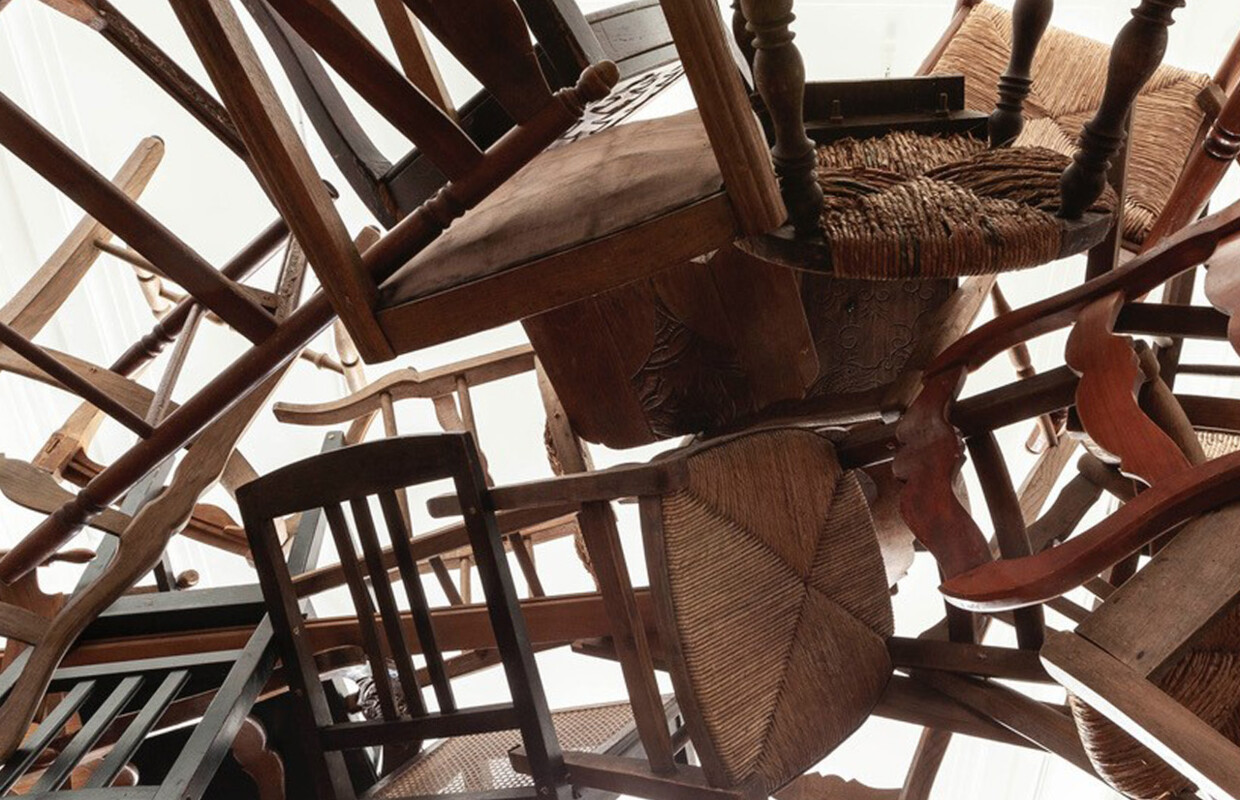
Although the art world, just like commercial advertising, must be vigilant against falling prey to "greenwashing" trends, the ecological exigence of the art consumers would nevertheless lead to changes on the supply side. The co-director of VOLTA Basel, Cristina Salmastrelli, pointed out in her interview with Lampoon, that the change in the art world will “come through the artists that the galleries choose to show”. Galleries are becoming more and more environmentally committed, not only in their business practices, but also in their choice of artists. As an example, the Japanese artist Tadashi Kawamata, represented by the Paris-based gallery Mennour, highlights the reuse and recycle of materials in his art practice. The famous in situ piece NEST IN LIAIGRE used chairs from Emmaüs, a French organization that collects and repurposes donated goods for a sustainable and socially inclusive impact, to form the nest-shape artwork, a work that questioned “the sustainability of materials, contemporary consumption patterns and the fight against waste”. The choice of artists of galleries, in turn, would send a powerful message and contribute to the shift in mindset.
Earth Play at the center of the Art Basel Miami Beach 2023 was a good metaphor. Entering 2024, it is high time for the art world to mainstream environmental concerns and to put sustainability at the heart of its discussion. As for art fairs, concrete actions are undertaken to decarbonize the sector, yet they must be accompanied by a more audacious exploration of new alternatives and a more thorough and determined change in mentality of all actors in order for a greener art fair to be achieved.
Share the post:

